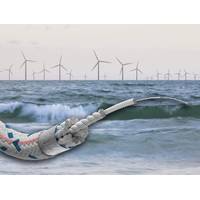
Bekaert Joins Tailwind Floating Wind Moorings Innovation Project
the acceptance of potential new technologies to act as a catalyst for increasing affordable wind power in the energy mix.The Tailwind consortium is composed of NGI - Norwegian Geotechnical Institute (Norway), Technische Universiteit Delft (Netherlands), Danmarks Tekniske Universitet (Denmark), SINTEF Ocean AS (Norway), Fundación Tecnalia Research & Innovation (Spain), Nautilus Floating Solutions (Spain), Bekaert (Belgium), Subsea 7 Norway AS (Norway), Fondazione ICONS (Italy), Clarke Modet Y Compania S.L. (Spain), NKT Cables Group A/S (Denmark), University of Southampton (UK).Tailwind

Barge Completes Autonomous Navigation Test in Busy Belgian Waterways
Pioner, completed a range of tasks autonomously.Both vessels are equipped with remote and fully autonomous operation technology as part of the AUTOSHIP project, part of the EU research program Horizon 2020. AUTOSHIP is a collaboration between KONGSBERG and Norway’s leading research organisation, SINTEF, as well as several European partners.The aim of the AUTOSHIP project is to test and develop fully autonomous navigation systems, intelligent machinery systems, self-diagnostics, prognostics and operation scheduling, as well as communication technology enabling a prominent level of cyber security
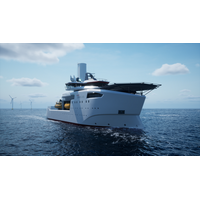
Norwegian Government Backs Project to Develop Offshore Charging Solutions
will enable continuous zero-emission operations on the Norwegian continental shelf for the first time," said Maritime CleanTech Head of Innovation, Øystein Huglen.Vard Design will lead the work together with sister companies Seaonics and Vard Electro, partners Rem Offshore, Solstad Offshore, SINTEF Energi, SINTEF Ocean, DigiCat, Sustainable Energy, Equinor, Source Energie, Corvus Energy, Plug, Shoreline, Marin Energi Testsenter, University of Bergen, Norce and Maritime CleanTech
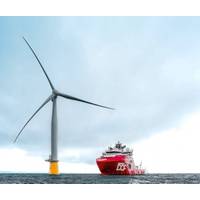
Kongsberg Maritime Launches EcoAdvisor for Offshore Vessels
Maritime has launched EcoAdvisor, an intelligent and dynamic decision support system for optimizing a range of offshore vessel operations. "EcoAdvisor is an outcome of a joint ‘Intelligent Efficiency’ research project between Kongsberg Maritime, vessel operator DOF Subsea AS (DOF), Sintef, NORCE, and Innovation Norway, with the aim of developing technologies to monitor and reduce the GHG (greenhouse gas) emissions during vessel operations," Kongsberg Maritime said.It monitors the vessel operation and its environment, including power generation, propulsion, environmental
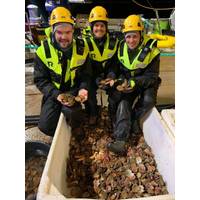
Tau Tech Raises $34.4m for Sustainable Seabed-Harvesting Tech
of naturally stored carbon from the seafloor. Norway is one of the few countries that prohibits this method to protect seabed fauna. As a result, valuable seafood resources along the Norwegian coast have remained inaccessible for 30 years. Together with Norwegian independent research institute SINTEF, Tau Tech has developed a seabed-friendly harvesting method. In cooperation with the Institute of Marine Research, the Directorate of Fisheries and other leading marine experts, the company has proven over the past five years that its technology makes it possible to identify, select and sort shells
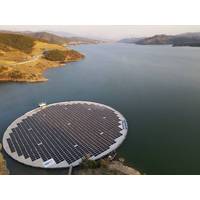
Ocean Sun, Partners Get Norwegian Gov't Green Funds
awarded NOK 79 million to develop the world's first large-scale hybrid hydro and floating solar power plant.At the same time, the partners will develop a platform for planning, dimensioning, design, optimization, and operation of hybrid power plants. In addition to Ocean Sun and Scatec, Prediktor, SINTEF Energi, IFE and Solenergiklyngen are also part of the consortium.The second Ocean Sun consortium, AluGreen, led by Norsk Hydro, will explore, develop, and pilot high-value circular Aluminum (Al) products, based on recyclable aluminum and renewable energy. The total grant for the consortium is NOK
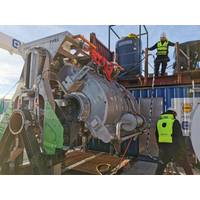
Subsea Tech: Taking 3D Printing to the Seabed
through the development of the Nautlus, and will also be the pilot client for introducing the service in the region, says Carlsen.In tandem with commercialising the composite repair system, has been working on adding 3D printing to Nautilus’ capabilities and has recently joined forces with Equinor, SINTEF and Gassco, with Norwegian National Research Council funding and support from part-owner-incubator Kongsberg Innovation to make this happen. Just like the composite repairs, the process would be done inside the Nautilus platform using additive manufacturing techniques to rebuild damaged metal structures
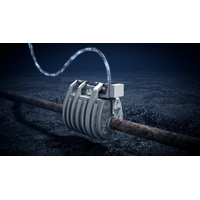
Subsea 3D Printing Tech Targeted for 2022
Norwegian robotics company Kongsberg Ferrotech has joined forces with Equinor, SINTEF, and Gassco to develop 3D printing technologies for subsea equipment repair and maintenance.The company has already developed a subsea robotic system, Nautilus, that can be used to carry out remotely operated composite repairs on subsea pipelines.Now the Kongsberg Ferrotech wants to add additive printing capability to these systems, using metallic media to repair defects, with support from the Research Council of Norway through the PETROMAKS 2 program. The company will use 3D printing to rebuild damaged metal structure

Aquaculture: Norwegian Researchers Work on 'Revolutionizing' Fish Farming
of the cage – with control over little more than depth and heading – and doing the inspection itself. If the operator could spend more time on the inspection, rather than navigation, the job could be done more quickly and efficiently. So, scientists from Norwegian research institute SINTEF hit on the idea of simplifying the task by developing a prototype inspection ROV with a high degree of autonomous navigational capability.“If you can make the ROV ‘fly’ along the net autonomously, then the pilot can concentrate more on inspecting the quality of the net and deploying


 February 2024
February 2024





